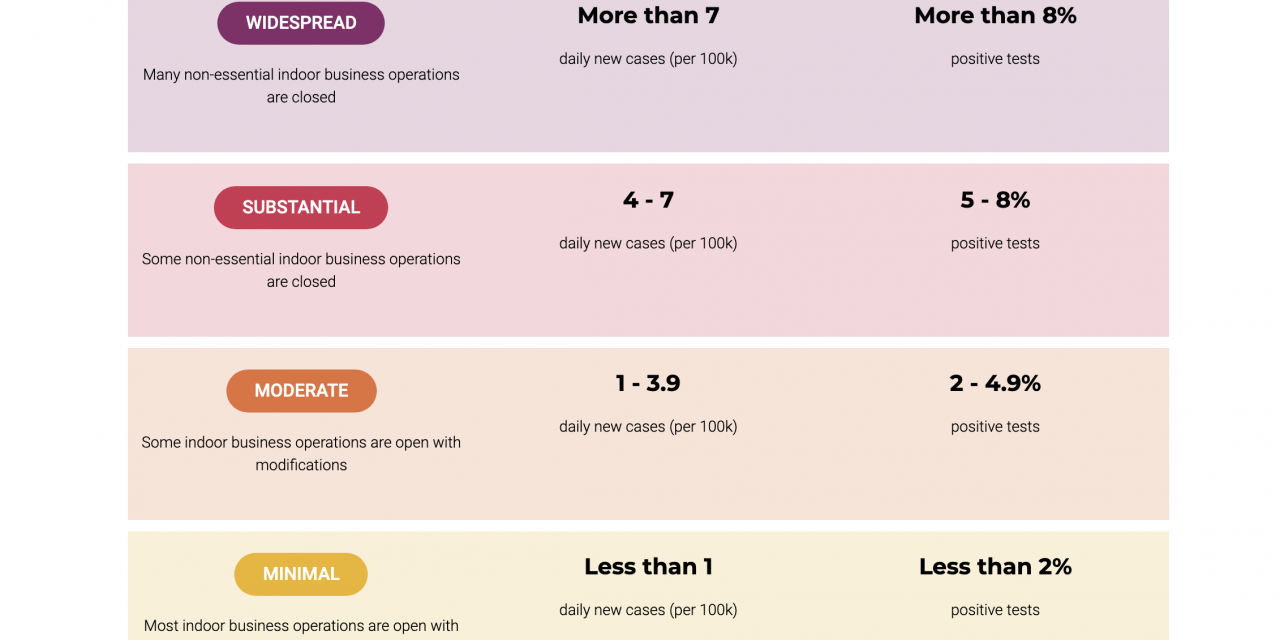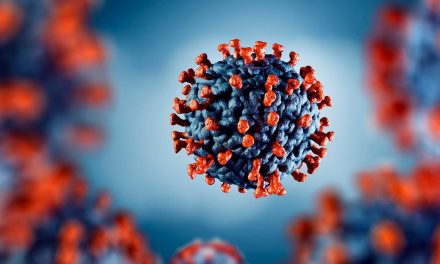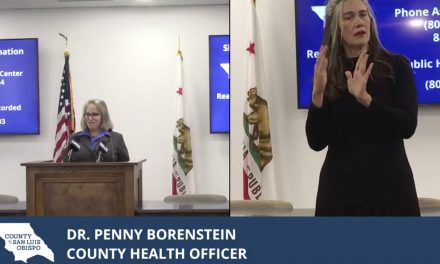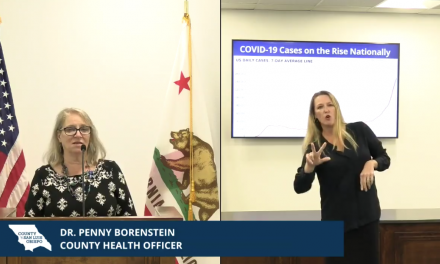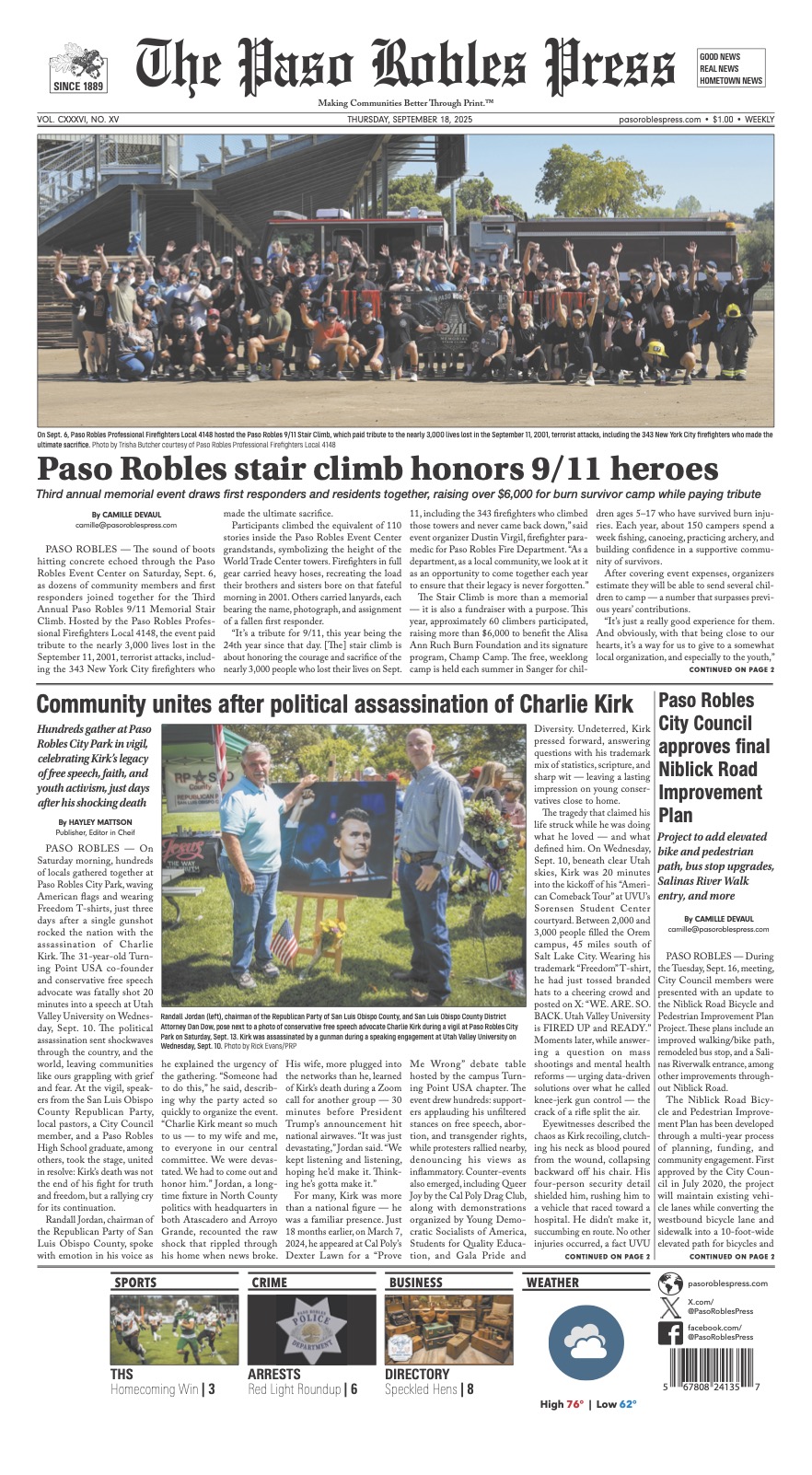SLO County in Widespread purple tier; Salons and barbers can move indoors starting Aug. 31
SACRAMENTO — California Gov. Gavin Newsom announced a new tiered process for reopening businesses — Blueprint for a Safer Economy — that is slower and more gradual than what the state tried earlier this summer. It goes into effect on Monday, Aug. 31.
The new rules announced Friday, Aug. 28, create a four-tier, color-coded system that counties will move through based on their number of cases and percentage of positive tests. It will rely on two metrics to determine which tier a county is in: case rates and the percentage of positive tests.
The changes come nearly two months after Newsom shut down bars, restaurants for indoor dining and a slew of other businesses following a surge in cases after the state’s first reopening attempt.
With version 2.0 of the state’s reopening, officials take a much slower and more cautious approach than they did the first time around.
The state is “making sure that we really hold strongly to these buffers in terms of criteria and data, and holding that criteria and data in line for an extended period of time,” Newsom said.
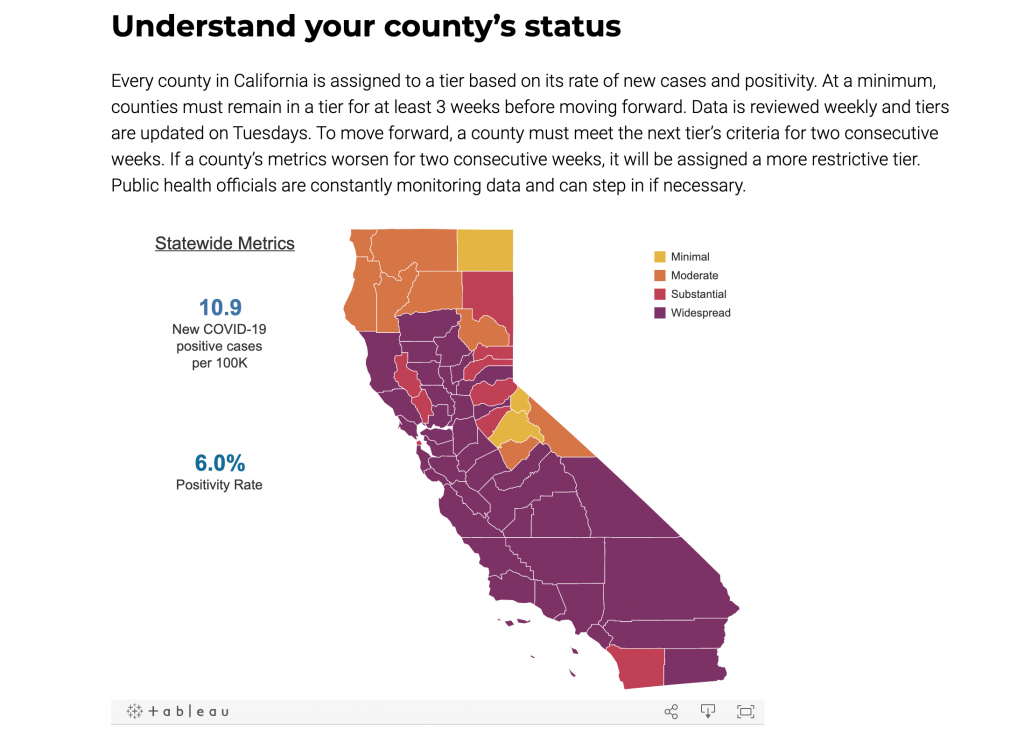
The state has revised the criteria and the time between changing tiers. They have made it easy for counties to see how changes affect the disease’s trajectory and for businesses and customers to plan ahead.
“We’re going to be more stubborn this time and have a mandatory wait time between moves. We didn’t do that last time,” Newsom said.
On Monday, Aug. 31, all counties, regardless of the tier, may open some businesses and activities with modifications, including all retail, shopping centers at maximum 25% capacity, and hair salons and barbershops indoors.
San Luis Obispo County — 7.3 new positive cases per 100,000 population and 4.2% positivity rate — is in the Widespread purple tier, the tier with the most restrictions.
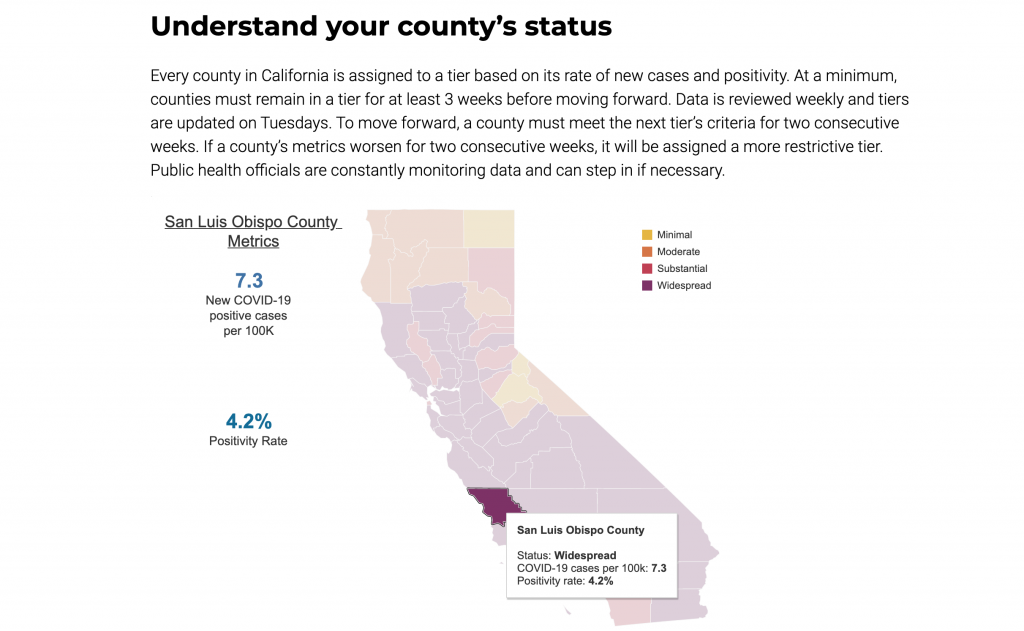
SLO’s positivity rate is well within the acceptable range for the Substantial pink tier. However, it needs to get its new positive cases below 7 for two consecutive weeks before it can be eligible to move out of the Widespread purple tier.
Every county in California was assigned to a tier based on its rate of new cases and positivity. At a minimum, counties must remain in a tier for at least 3 weeks before moving forward.
Data is reviewed weekly and tiers are updated on Tuesdays. To move forward, a county must meet the next tier’s criteria for two consecutive weeks. If a county’s case rate and positivity rate fall into different tiers, it remains in the stricter tier.
If a county’s metrics worsen for two consecutive weeks, it will be assigned a more restrictive tier. Public health officials are monitoring data and can step in if necessary.
The tiers in order from most to least restrictive are:
• Widespread (purple) — Many non-essential indoor business operations are closed
• Substantial (pink) — Some non-essential indoor business operations are closed
• Moderate (orange) — Some indoor business operations are open with modifications
• Minimal (yellow) — Most indoor business operations are open with modifications
Schools in the Widespread tier aren’t permitted to reopen for in-person instruction unless they receive a waiver from their local health department for TK-6 grades.
Schools can reopen for in-person instruction once their county has been in the Substantial red tier for at least two weeks. Schools must follow these guidelines when they reopen or if they have to close again.
Information on the Blueprint for a Safe Economy can be found online at https://covid19.ca.gov/.

